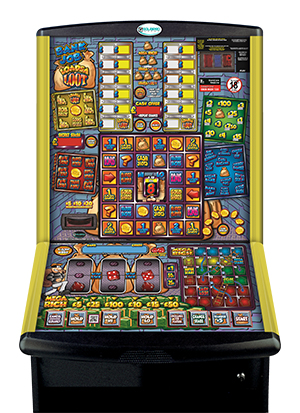Steph Norbury considers what the future may hold for Category C gaming machines in the UK.

A YEAR ago, the UK industry was bracing itself for an increase in jackpot for the AWP machine that would finally propel it into three figures. Some might argue that even with the new £100 jackpot, which came into effect in mid-January 2014, the modest prize of the AWP, or Cat C machine still seems somewhat out of step with the rest of the gambling sector, such as online, lottery or, of course, the betting shops where £100 can be staked on a fixed odds betting terminal.
However, those involved in the manufacture and operation of these machines were grateful to finally be granted a boost in prize. “We believe the jackpot increase to the desirable value of £100 has had a positive impact on existing players and by drawing in new players to our product,” says Clive Barrett, managing director of Entnet.
Despite the long wait, the changeover to the new jackpot appeared to go very smoothly, with most operators investing in kits to upgrade existing machines and making cautious purchases of brand new games, as Peter Davis commercial director at leading operator Gamestec explains.
“We utilised a combination of kits - in the majority - and new machines to achieve a rapid conversion programme. The issue with purchasing new machines up front was, of course, the unproven element of £100. We had no facility to pre-test £100 games in advance of implementation and as such we either purchased proven £70 games - taking a risk on £100 version performance - or we bought completely blind. Clearly the use of kits minimised this risk.”
As ever, the investment required to make the changeover to a new prize level can be onerous for the operator, particularly when there is no guarantee that there will be a large upturn in cashbox as a result. This was a situation noted by Paul Wilson, MD of PW Sales, UK distributor of Blueprint and G Squared Category C machines.
“Customers were forced to buy into upgrade kits due to contractual agreements and unfortunately this placed an unavoidable financial burden on them,” he says. “Thankfully our manufacturers have been very fair with their pricing of kits. Sales of newly designed £100 machines were based around testing but with the excessive price of some of the kits from other manufacturers, operators have not been able to invest in as many new machines as they would have liked.”
Read the full article in the February issue of InterGame

